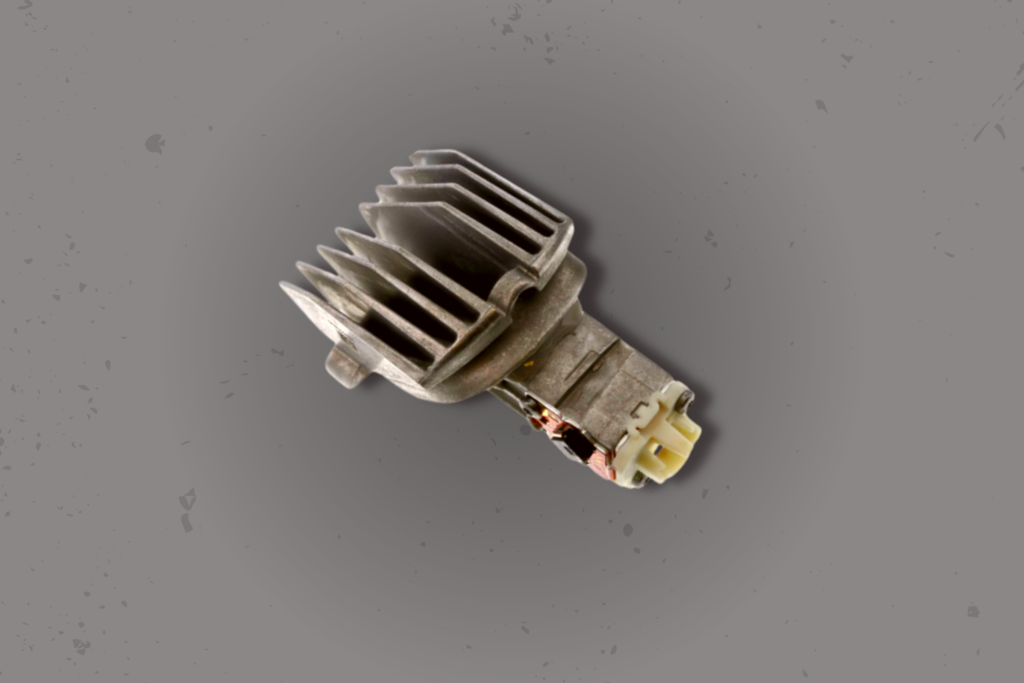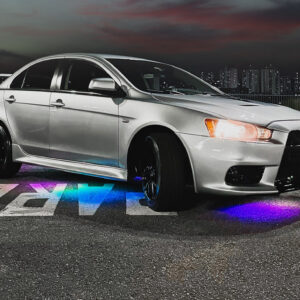Turn signals should never flash more than 120 times per minute. Any higher than that and you’re likely to get pulled over for breaking the law. Hyperflashing lights are dangerous because of how distracting they can be for other drivers, especially at night. It usually happens when you upgrade your turn signal lamps to LED bulbs.
As a responsible driver, you should never ignore hyperflashing lights. Grab your tool kit and an LED load equalizer, and fix those hyperflashing lights as soon as possible.

What Is an LED Load Equalizer?
Also known as an LED load resistor, an LED load equalizer is an electrical component that can solve your vehicle lights’ rapid or no light flash issues.
The turn signal electronics (whether in a flasher or a module) will, if the vehicle came with incandescent bulbs, flash the signals faster when one of the bulbs is blown because it detects a lower current flow on the side with the blown bulb. It is designed to flash the signal faster so the driver will know a bulb has failed. When LED lights are installed in a system designed for incandescent bulbs, the electronics are fooled into thinking there’s a problem and will flash the signals very rapidly. Installing LED load resistors with your LED bulbs can prevent this from happening.
When LED lights are installed in a system designed for incandescent bulbs, the electronics are fooled into thinking there’s a problem and will flash the signals very rapidly. Installing LED load resistors with your LED bulbs can prevent this from happening.
–Richard McCuistian, ASE Certified Master Automobile Technician
As a power sink, an LED load resistor can help dissipate the same amount of power as your OEM turn signal bulbs, tricking your flash relay into thinking your OEM bulbs are still there.
LED load equalizers can also prevent your light bulbs from burning out too quickly. They come in various sizes, wattages, and price points. In other words, you’re likely to find one that’s compatible with your vehicle’s lights.

How To Fix a Hyperflashing LED Turn Signal
Installing a load equalizer for LED lights is relatively easy, but it can be confusing for beginners. The specific process can vary depending on your vehicle’s make and model, but here’s a general guide to help you with your DIY repair:

Prepare Your Equipment
Before anything else, make sure you have the right tools with you. You’ll need your drill, pliers, self-tapping screws, and, of course, your LED load equalizer. Since you’ll be dealing with electrical wires, wear protective gloves and safety glasses.
Remove Your Tail Light Assembly
You’ll have to remove your tail light assembly before you can install your load resistor. Use your drill to unfasten the screws securing the assembly to your vehicle, and carefully pull the assembly away from your vehicle to disengage it.
Locate Your Turn Signal’s Wiring
For some vehicles, the wiring to each bulb socket is easy to identify, but others might have a single plug and connector for every bulb. If your vehicle is the former, go ahead and identify the wiring for your turn signal.
Make Sure Your Load Equalizer Reaches the Wiring
You need to ensure that the load equalizer can reach an internal metal surface in your vehicle and the turn signal wires. If it can’t, extend the load equalizer’s wires until it can reach the turn signal wiring from where it’s mounted.
Inspect the Wiring
Does your turn light bulb have a double filament or a three-wire socket? Left and right turn signal circuit wire colors are typically different, so you’ll have to determine which wire color is the correct one first before installing your LED load equalizer.
Clip and Secure the Trailer Splices
Take the ends of the load resistor wire and one of the turn signal wires, and clip the trailer splices over them. Use your pliers to make sure the clips are secure.
Install the Load Resistor
Using your drill and self-tapping screws, mount the load resistor to a flat metal surface inside your vehicle. This will help dissipate the heat and ensure your LED bulbs don’t burn out.
Fixing a Tail Light Assembly With a Single Connector
If your vehicle’s tail light assembly only has one plug and connector, you’ll have to go through a few extra steps to install your LED load resistor. Here are a few suggestions to guide you:
Use a Multimeter
A multimeter will make it easier to identify your turn signal’s wires. Be sure to use a multimeter that has a continuity setting, as not all multimeters have this function. Continuity mode is typically symbolized by a diode with waves around it.
Figure Out the Continuity
To find your turn signal wire, try removing the bulb socket of the LED bulb you’re replacing. Then, use your multimeter by connecting one probe to the tail light assembly’s body and the other probe to the connector. Do this until your multimeter rings or signifies that you’ve found continuity.
Identify the Correct Wires
Now that you’ve found continuity to both points on the socket, you can now try identifying the wires of your turn signal. Inspect the wiring and connector until you can trace the contacts back to the wire that connects them. From there, you can follow the same guidelines previously mentioned.
Do You Need an LED Bulb Load Equalizer?
When you remove the OEM blinker lamps on any vehicle, they tend to start hyperflashing or blinking faster. This is due to the flasher relay, which is designed to make your lights blink faster when it detects a burnt-out light bulb. Unfortunately, they also tend to send this signal when you use LEDs even if they are still functioning properly.
Because they’re so efficient, LED bulbs tend to draw little power, which can trick your flasher relay into thinking they’re damaged. If this happens to you, then you’ll likely need a load equalizer to stop your lights from hyperflashing.
Find LED Bulbs That Fits Your Vehicle
The benefits offered by LED bulbs are worth the expense and effort of installing an LED load equalizer in your vehicle. You’ll get brighter, cooler lights that consume less power. Find the right LED bulbs for your car or truck here at CarParts.com.
At CarParts.com, we make it easy to find LED bulbs and other parts that are compatible with your vehicle. Access our secure website’s built-in vehicle selector and enter details like your ride’s year, make, model, and engine. You’ll see the products in our extensive catalog that meet your particular needs. Once you find the LED bulbs you like, place your order with a few taps on your mobile device’s screen. You can get your order in as little as two business days if you live in the continental US and place your order before noon ET.
If you need a high-grade LED bulb at a price you can’t beat, look no further than CarParts.com. Browse our selection of LED bulbs today and get big savings on your order!
Any information provided on this Website is for informational purposes only and is not intended to replace consultation with a professional mechanic. The accuracy and timeliness of the information may change from the time of publication.































Great article, but my question is, are we defeating the purpose of using LED lights, since the load resistor is using the same power of conventional lighting?